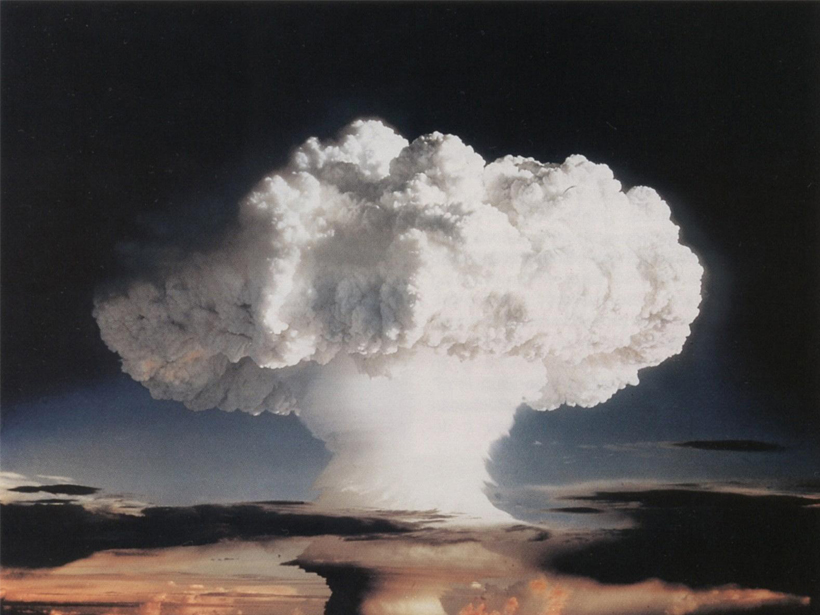The Anthropocene, a term widely used to define the current period of dramatic human-influenced changes to the Earth, should be formally recognized as a new geologic time interval, according to a new stratigraphic assessment by an international group of scientists.
However, designation, if it happens, won’t be quick and could be years away, according to the group, the Anthropocene Working Group (AWG) of the International Commission on Stratigraphy’s (ICS) Subcommission on Quaternary Stratigraphy. Designation requires a formal proposal from AWG, which the group anticipates may be ready in about 3–4 years, followed by an evaluation by Quaternary experts and approval by ICS. The Quaternary geologic period covers the past 2.6 million years and encompasses the Holocene and Pleistocene epochs.
The Anthropocene concept is “stratigraphically real” and “potentially a valid chronostratigraphic unit.”
The Anthropocene concept is “stratigraphically real” and “potentially a valid chronostratigraphic unit,” according to working group members. AWG secretary Colin Waters presented the assessment during a session on Saturday at the International Geological Congress (IGC) in Cape Town, South Africa.
In his presentation, Waters noted that as a preliminary step, 30 out of 35 AWG members favored formalizing the Anthropocene in a recent nonbinding vote. A majority voted in favor of designating the Anthropocene as an “epoch/series,” according to the working group, which would mean that the current Holocene epoch, which began about 11,700 years ago, has terminated.
The majority of AWG members also voted to pin the start of the Anthropocene at about 1950, a period of “great acceleration” in human-induced global changes to the Earth system. Many members viewed plutonium or radiocarbon traces in sediment from atmospheric nuclear bomb tests as the primary indicator of those changes. Other key signals for the Anthropocene considered by the group include the introduction of plastic and other novel materials, fossil fuel combustion and carbon dioxide concentration, and extinctions and invasive species.
Not a Formal Submission
Waters, principal mapping geologist with the British Geological Survey, in Keyworth, U.K., told Eos that his presentation “is not a formal submission, just a review of the work of the AWG over the last 7 years. In effect, we see this as the end of phase 1 of the project, to provide the narrative of what the Anthropocene means to us, what are the key signals and when do we [propose] it broadly starting.” He said that in phase 2, the group will move toward formally defining the Anthropocene on the basis of what’s called a Global Boundary Stratotype Section and Point (GSSP) to set the lower boundary of the potential new epoch.
Waters said the group could require a 2- to 3-year window to carry out phase 2 but that the time frame could depend on how much they can collaborate with researchers who have physical core samples that would allow them to continue to acquire additional data.
Questions About the Anthropocene
At least one prominent ICS member disagrees with the working group’s assessment. ICS past chair Stanley Finney, who also made a presentation at the IGC, argues that the stratigraphic record for the Anthropocene is minimal and that the proposed beginning of the Anthropocene in the mid-20th century would not include a significant amount of human-influenced changes that took place before then. Finney, a professor in the department of geological sciences at California State University at Long Beach, doesn’t dispute the significant human impact on the Earth system, but he questions whether the push to formally recognize the Anthropocene is political rather than scientific.
Some scientists question whether the push to formally recognize the Anthropocene is political rather than scientific.
Waters said that many phenomena connected with the Anthropocene, including climate change, are of societal and political importance. However, he said that this “should not disqualify [the Anthropocene] from scientific analysis, nor from potential geologic formalization in the future. Rather, it enhances the case for the rigorous scrutiny it is undergoing.”
He said that formalizing the term as part of the stratigraphic record would give the Anthropocene an accepted scientific definition. “By having our peers accept [that] we have met the challenges of providing a rigorous definition, it would show the validity of the term,” Waters added.
—Randy Showstack, Staff Writer
Citation:
Showstack, R. (2016), Scientific study group favors recognizing human-influenced epoch, Eos, 97, https://doi.org/10.1029/2016EO058567. Published on 01 September 2016.
Text © 2016. The authors. CC BY-NC-ND 3.0
Except where otherwise noted, images are subject to copyright. Any reuse without express permission from the copyright owner is prohibited.

